If you are longing to get off grid, a DIY composting toilet is simple to construct and use.I built an experimental humanure toilet and used for a year on a trial basis (my bathroom is too small for two toilets!).
I was surprisingly pleased with the results. Knowing how to properly build a compost toilet is great for potential survival situations.

If you choose to use one, you can save a little on the utility bills, and reduce your impact on the environment.
Knowing how to make a composting toilet can open up new living possibilities such as cheap land, or your own mortgage free tiny house.
Skills such as a homemade composting toilet, handwashing your laundry, or living without a fridge seem extreme to most people.
However, these are valuable skills to have at your disposal.
What is a Composting Toilet?
A composting toilet is NOT an outhouse! It does not smell. It does not create pollution. Building a compost toilet is a good way to take refuse and turn it into a resource.
A DIY composting toilet takes human waste, and dry material such as sawdust, crushed leaves, or wood ash and composts it with straw at a high heat to kill potential pathogens.
At the end of the process you are left with sweet smelling, clean, and hygenic compost.
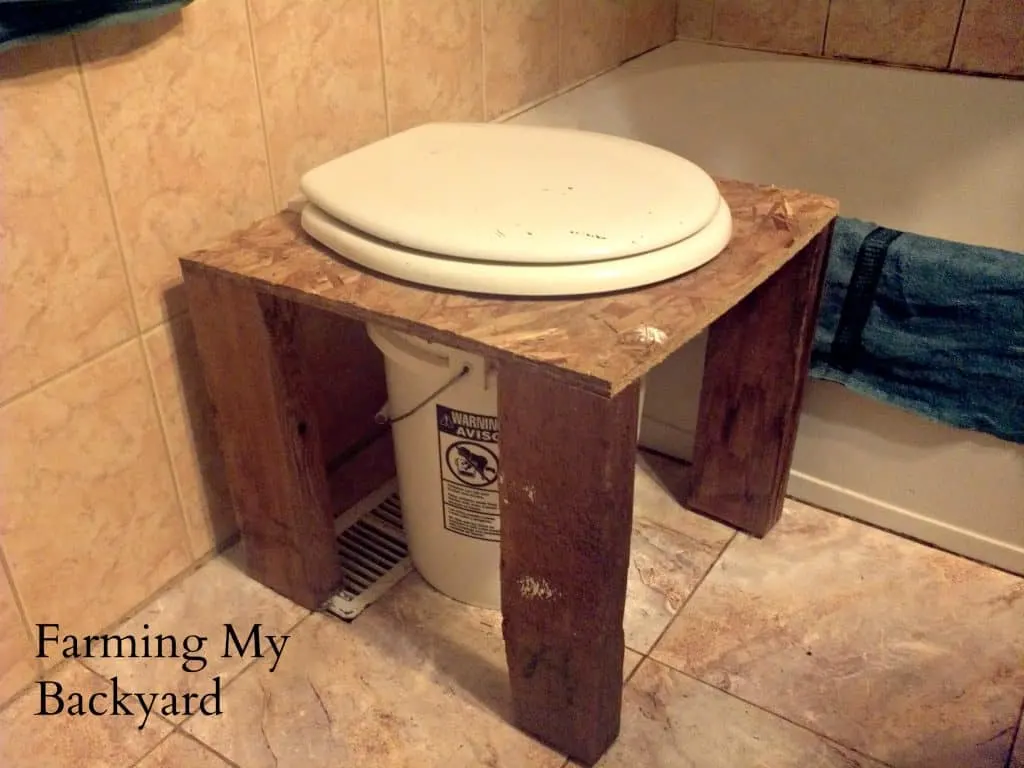
How to Build a Homemade Composting Toilet
Building a simple sawdust toilet can be as easy as balancing a toilet seat over the top of a five gallon bucket, or a gorgeous handcrafted wooden work of art.
Here’s a quick tutorial on how to build a simple yet sturdy DIY composting toilet.
If you’d like a printable copy of these instructions to put in your emergency supplies, or to take to the store with you, you can download PDF instructions here.
Assemble your supplies. You will need two five gallon buckets of the same height, four 2x4s the same height as the buckets, a toilet seat plus hardware, a piece of plywood larger than your toilet seat, and eight screws.
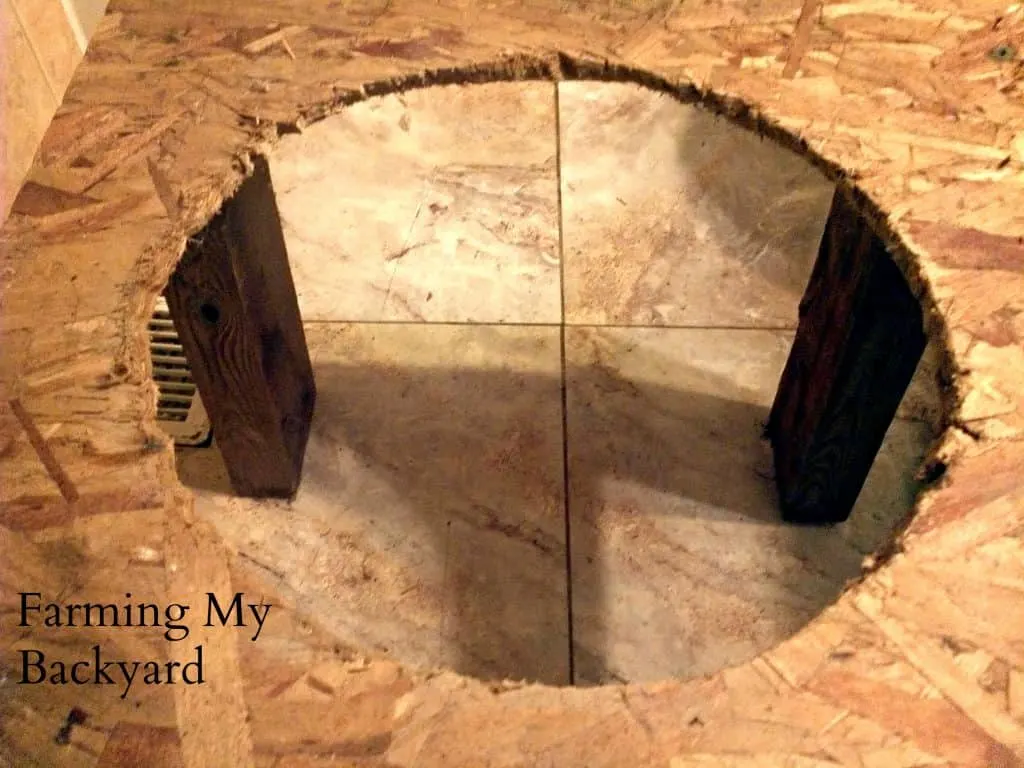
Saw a hole that is the same size as the five gallon buckets into your piece of plywood.
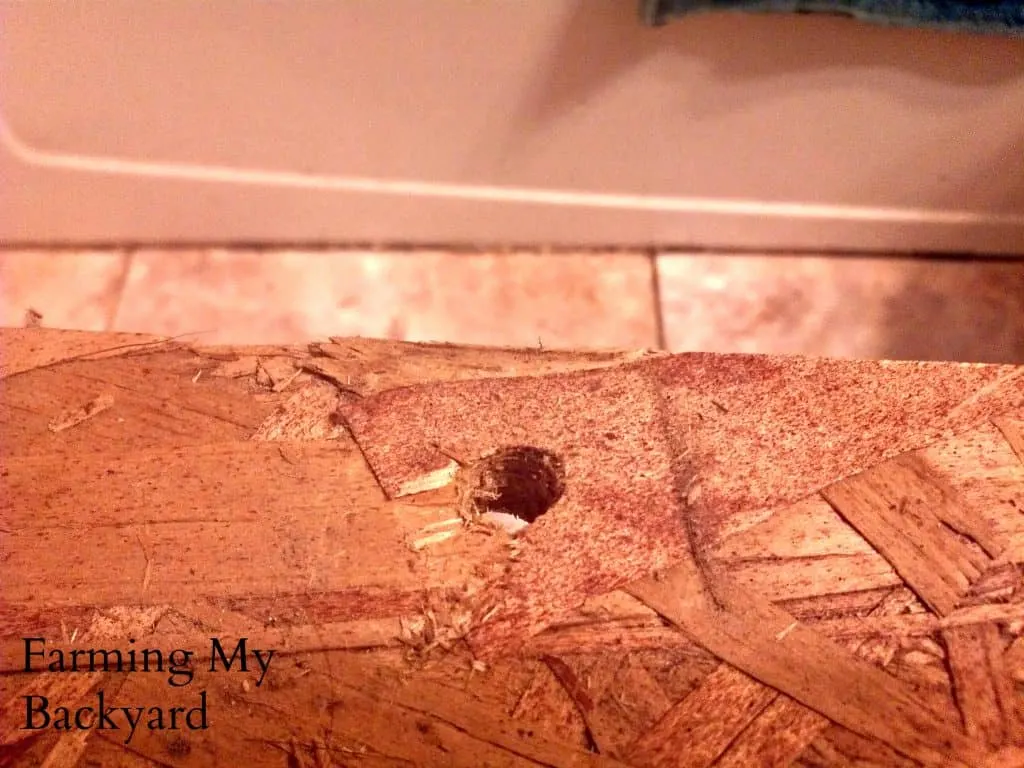
Line your toilet seat up centered over the hole you just cut. Mark where to drill holes for the toilet seat hardware. Drill those holes.
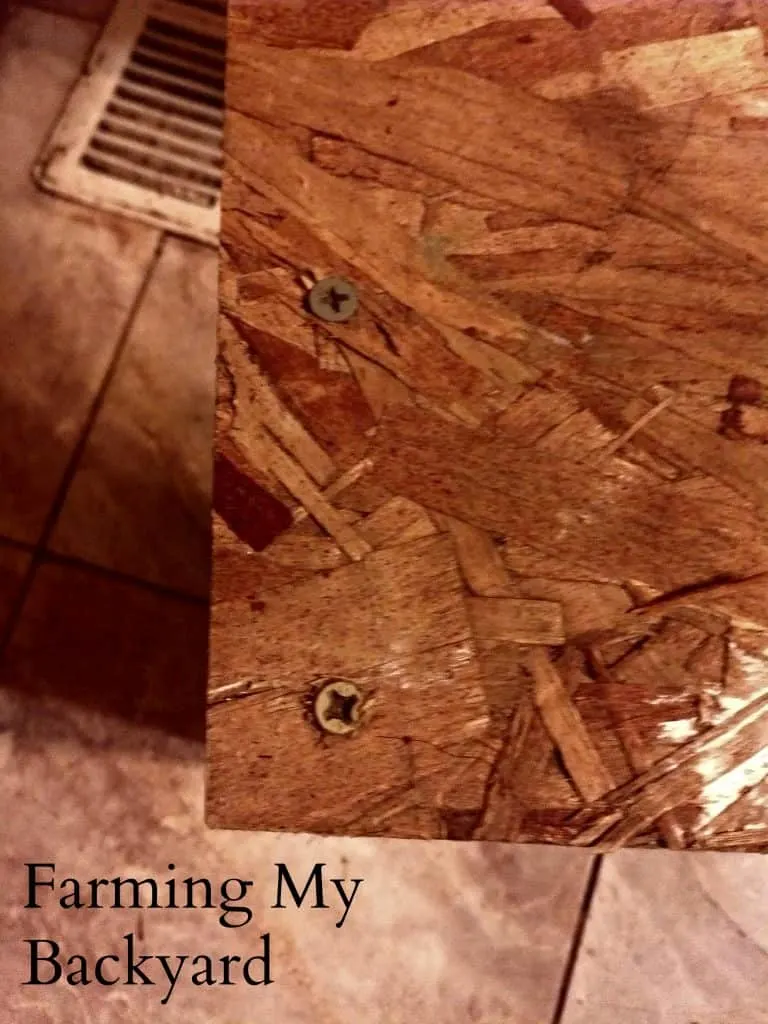
Screw a 2×4 at each corner of your plywood to create four legs.
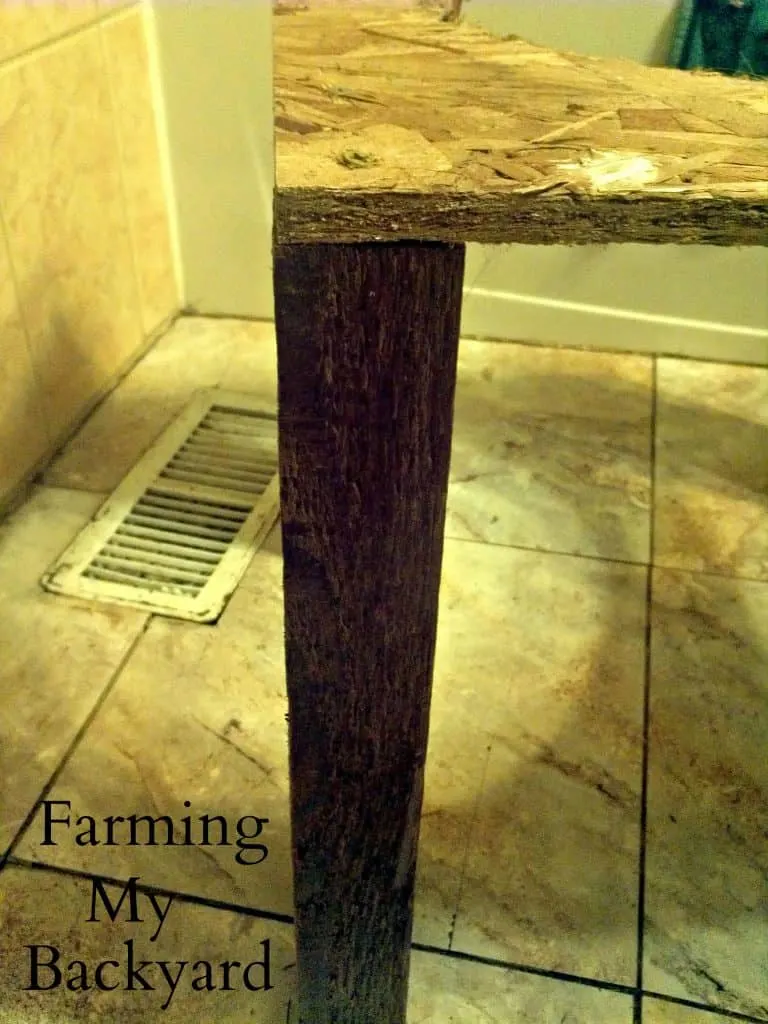
Stand the frame up onto it’s legs. It’s time to start putting it all together!
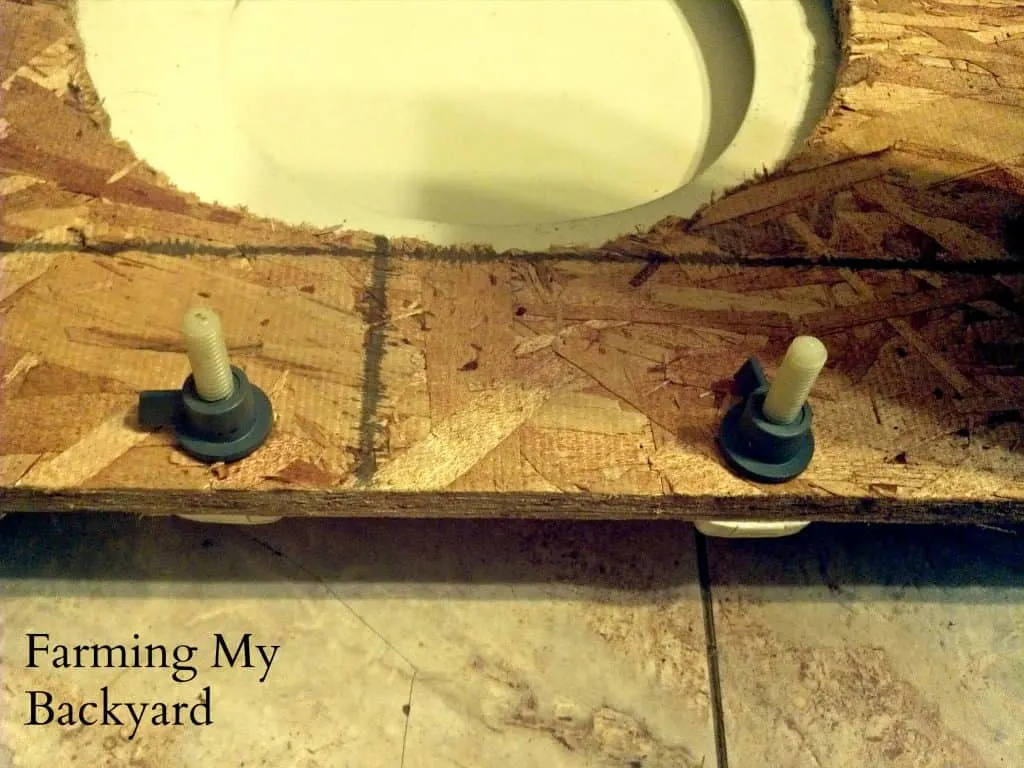
Attach the toilet seat to the plywood.
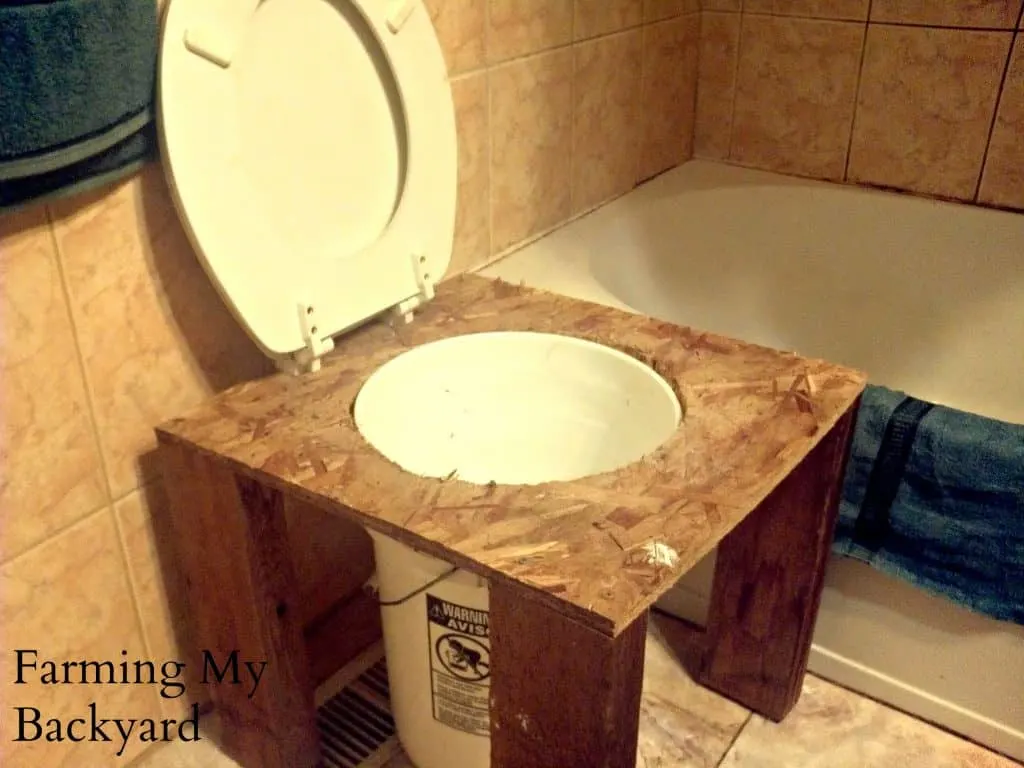
Place one bucket so it fits into the large hole in the plywood. Add a few inches of your cover material (such as sawdust) and it’s ready to use!
How to Use Your DIY Composting Toilet
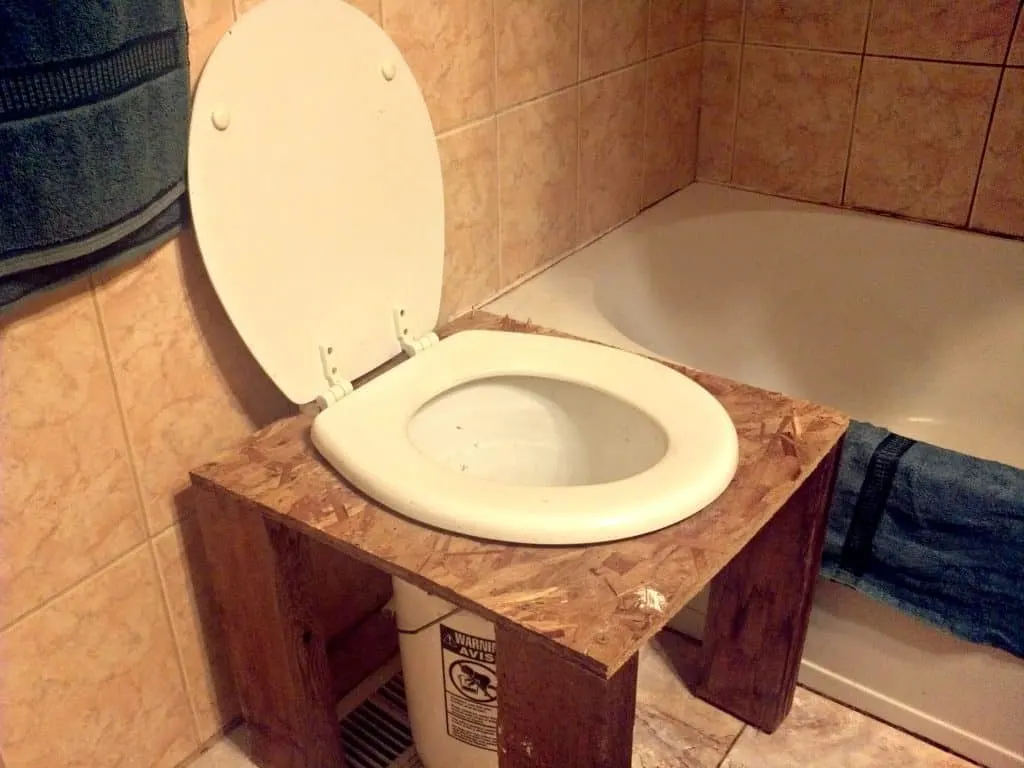
Before using a bucket the first time make sure there is a few inches of cover material in the bucket. Use as you would any toilet.
Instead of flushing, cover all the contents with a thick layer of cover material. The cover material is the big key to making this system work.
Sawdust is ideal, because it is fine, and absorbent. I know people have used peat moss and crushed dry leaves with good success.
I had none of those things available, and had good results using wood ash from our woodburning stove. Completely cover all contents with the cover material.
When the bucket is full, put in an empty bucket and take the full bucket out to your outdoor compost bin.
A three bin system works best with compost toilets. That way you have one to fill, one to cure for a year, and one to harvest finished compost.
To keep your carbon and nitrogen levels balanced make sure to add lots of dry material such as straw. Use plenty of straw.
When your bin is full, let the compost cure for a year.
If you are planning to use the finished compost on edibles make sure that it reaches an internal temperature of 122 degrees for at least one week to destroy all potential pathogens.
For some reason, if it does not reach high temperatures it is safest to let it cure for second year.
If you don’t want to wait two years it’s still safe to use on non-food crops or orchards. There are compost thermometers available to check temperatures.
If the idea of composting human waste is new, I suggest reading Holy Shit by Gene Logsdon. It’s entertaining, yet informative.
If you want a more in depth look at composting toilets The Humanure Handbook by Joseph Jenkins is the way to go. The Humanure Handbook can also be downloaded for free here.
If you want more homestead related books, feel free to check out our resource page!
If you’d like a printable copy of these instructions to put in your emergency supplies, or to take to the store with you, you can download PDF instructions here.
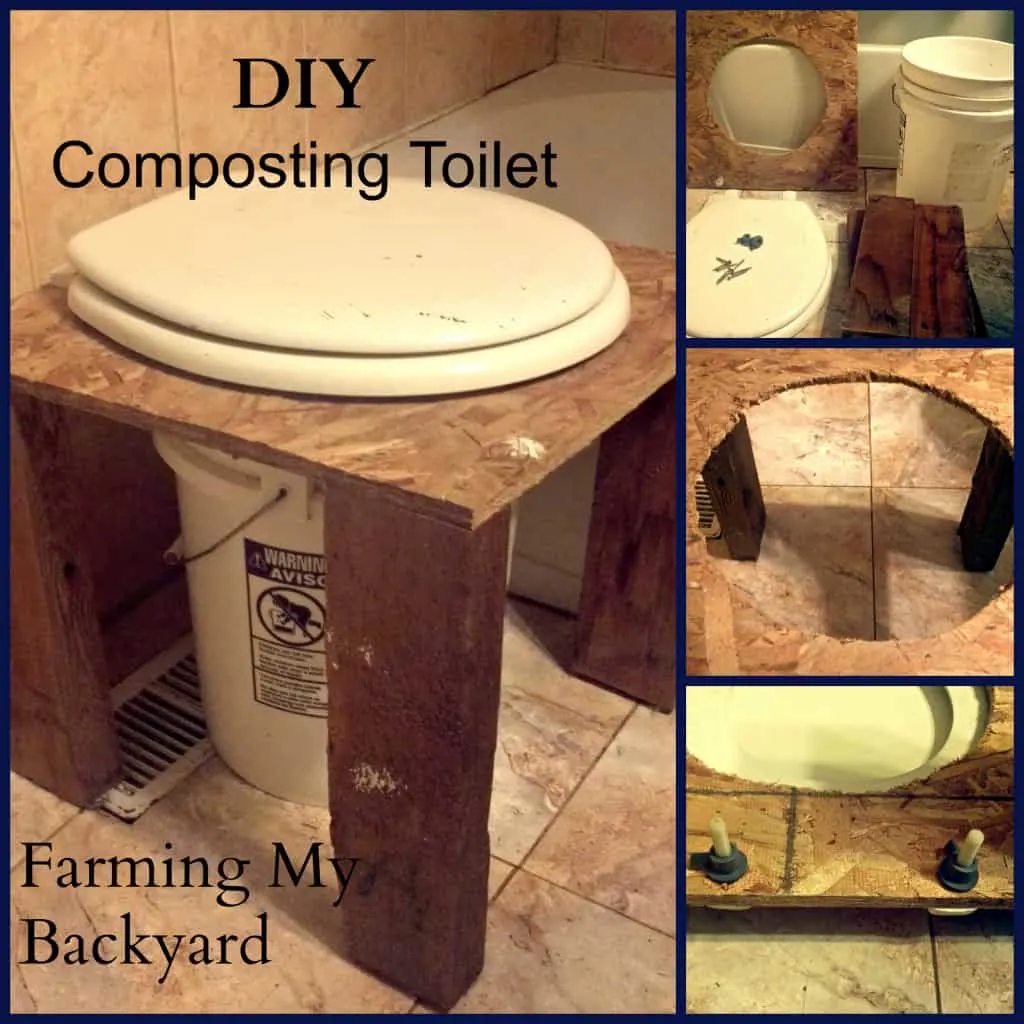
Want To Raise Happy Chickens?
Subscribe for our newsletter and get the free email course Intro To Backyard Chickens as well as a free printable checklist to walk you through step by step!

Chris Above U
Saturday 27th of May 2023
I have an airplane hangar that is way on the other side of the airport from the airport office (where the bathrooms are). The hangar where I store the plane has a large area with heaped up dirt. Although the dirt is very dry as it is in the hangar, it is not sand. Do you think this could be used as a cover material for the inside bin before moving it outside. Another airplane owner keeps bees behind the row of hangars, I was thinking of a small garden and this would help solve two problems.... having a bathroom and fertilizing a garden in the area.
Kathryn
Wednesday 31st of May 2023
So the best cover material is sawdust because it will compost down. If the dirt is very fine, it should help with odor, but it won't help the composting process get hot enough to kill pathogens. I would not fertilize a garden of edibles with this compost, but ornamentals or fruit trees would be safe.
Ki
Monday 20th of February 2023
How do you prevent toilet seat “sweat” when the toilet seat is closed?
Kathryn
Wednesday 22nd of February 2023
I have not personally experienced that issue, but I would suppose more cover material may resolve it.
Ladonna Grange
Sunday 17th of April 2022
You could use a bedside commode rather than building a wooden frame, and buy a second bucket.
Kathryn
Tuesday 19th of April 2022
Great suggestion!
June Tillian
Friday 11th of June 2021
Using a five-gallon bucket with a pool noodle added to the top makes a great toilet seat. Just split the noodle down one side and place around the top of the bucket.
Kathryn
Saturday 12th of June 2021
Thanks for the tip!
Squirrell
Sunday 30th of May 2021
An you use dried grass cuttings for cover material mixed with possible wood ash, i hav e not collected leaves from laser fall. I will not have access to leaves till this fall, another 5 months?
Kathryn
Monday 31st of May 2021
Dried grass will work in the outdoor bin, but it would need to be chopped or shredded for the indoor bin.